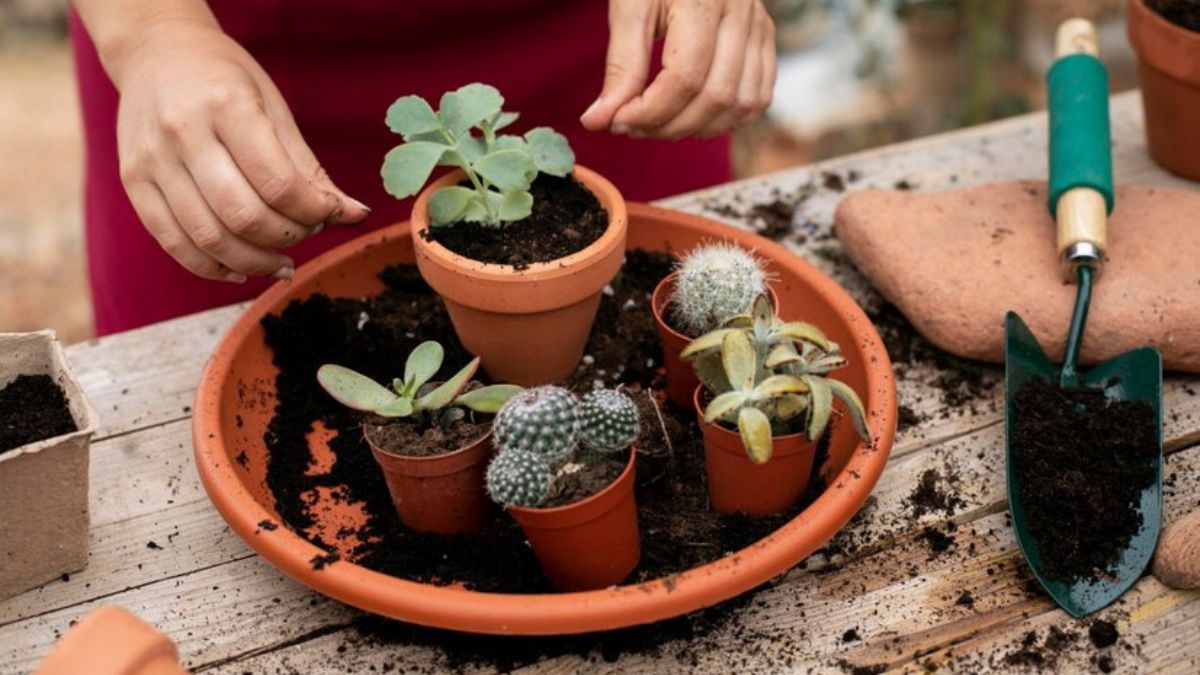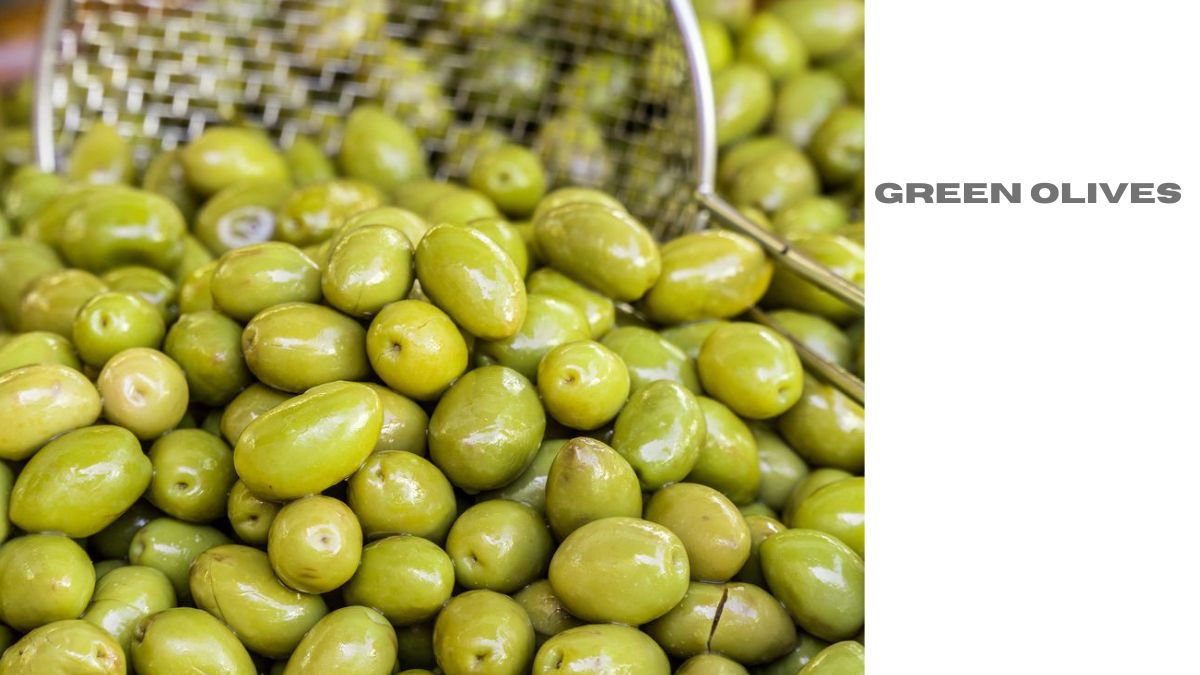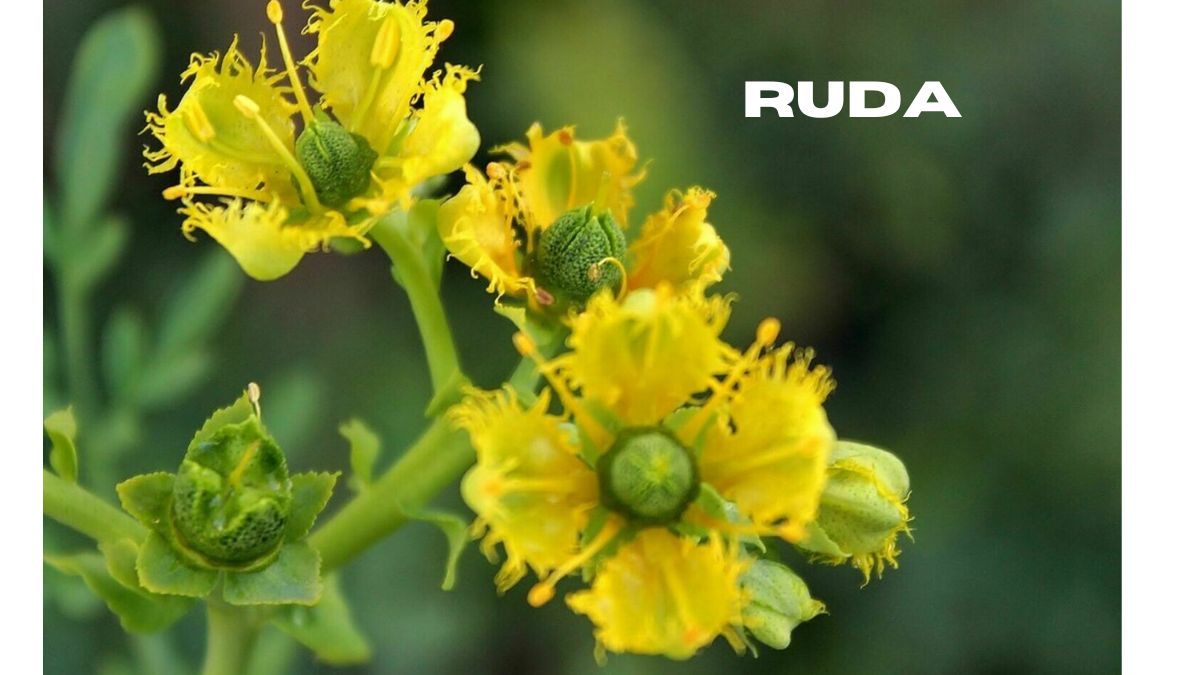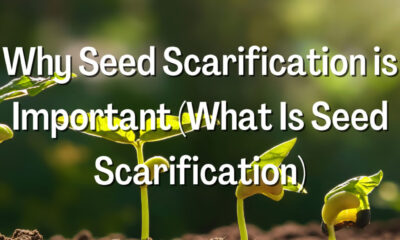Houseplants
How to Choose the Right Cactus and Orchid Soil (Important Facts)

When it comes to caring for cacti and orchids, one of the most important things to remember is using the right soil.
Cactus soil is different from orchid soil, and using the wrong type of soil can harm your plants.
In this article, we’ll discuss the differences between cactus and orchid soils and give tips on choosing the right soil for your plants.
What Is the Difference Between Cactus Soil and Orchid Soil?
While cactus and orchid soil may look similar, they have quite different properties.
Cactus soil is much more porous than orchid soil, which means it doesn’t hold water as well. This can be a problem for orchids, which need to be kept moist in order to thrive.
Orchid soil also has a higher pH level, which is important for orchids because they like acidic soil.
So, while you can technically use cactus soil for orchids, it’s not the best option and you’ll likely need to adjust the pH level at some point.
What Are the Best Cactus Soils?
If you’re looking for the best cactus soil, you should look for a mix that contains both inorganic and organic matter.
A good cactus soil should be well-draining but also hold moisture. You can find commercially available cactus soils or make your own by mixing one part perlite or coarse sand with one part potting soil.
Related Post: Can You Put Orchids in Regular Potting Soil? (Answered for Beginners)
The type of soil you use is important when it comes to growing cacti. Cactus soils should be light and airy, so avoid using garden soil or potting mixes that contain too much clay.
Instead, look for a mix that contains ingredients like perlite or sand. These materials will help keep the soil loose, preventing the roots from waterlogging.
In addition, make sure to choose a pot with drainage holes to allow excess water to escape. You can give your cactus the best chance of thriving with the right type of soil and pot.
You can also add some bark chips or gravel to improve drainage. Remember, when it comes to cactus care, drainage is key!
What Are the Best Orchid Soils?
Orchids are relatively finicky plants, and they require a specific type of soil in order to thrive. The best orchid soil is a mix of bark, charcoal, and sphagnum moss.
This combination of ingredients provides the perfect drainage and moisture retention balance for an orchid.
The bark and charcoal also help keep the soil pH levels in check, while the sphagnum moss provides essential nutrients.
While purchasing pre-made orchid soil mixes is possible, many gardeners prefer to make their own. This ensures that the mix is tailored specifically to their plant’s needs. With a little trial and error, anyone can create the perfect potting mix for their orchids.
This type of soil drains well but also holds moisture, which is important for orchids.
You can find commercially available orchid soils or make your own by mixing two parts bark, one part charcoal, and one part sphagnum moss.
Related Post: How to Get Rid of Gnats in Your Houseplants: The Definitive Guide
Can You Use Cactus Soil for Orchids?
Cactus soil is not the greatest choice for orchids, although it can be used for them.
Orchids need a well-draining but moisture-retentive potting mix, and cactus soil doesn’t hold water well. In addition, orchids prefer acidic soil, while cactus soil has a neutral pH level.
So, while using cactus soil for orchids, you’ll likely need to adjust the pH level at some point. Therefore, it’s better to use a potting mix that is specifically tailored to orchids.
This will give your plant the best chance of thriving.
To sum up, remember that cactus and orchid soils are different. Cactus soil is more porous and doesn’t hold water as well, while orchid soil has a higher pH level.
Quick Tips for Caring for Cacti and Orchids
- Water cacti deeply but infrequently and allow the soil to dry out completely between waterings.
- Don’t let orchids sit in water, as this can lead to root rot. Instead, water them thoroughly and then allow the potting mix to dry out completely before watering again.
- Fertilize cacti monthly during the growing season using a balanced fertilizer. Orchids need to be fertilized more often, about every two weeks. Use a weak solution of fertilizer so you don’t burn the roots.
- Cacti prefer bright light, but direct sunlight can scorch their leaves. Orchids need bright light but should be protected from direct sunlight.
- Cacti can be moved outdoors in the summer, but make sure to acclimate them slowly to avoid sunburn. Orchids should not be moved outdoors.
- Both cacti and orchids need well-draining soil. To improve drainage, add perlite or sand to the potting mix.
- Repot cacti every two to three years, and orchids every year or two. This helps refresh the potting mix and allows the plant to continue growing.
Related Post: Feeding Houseplants with Tomorite: Does It Make a Difference?
Final Thoughts
Cacti and orchids are two very different plants that require different types of soil to thrive. Cactus soil is more porous and doesn’t hold water as well as orchid soil, which can lead to root rot.
Orchids prefer acidic soil, while cactus soil has a neutral pH level. However, you can use cactus soil for orchids if you’re willing to adjust the pH levels at some point.
The best option is to use a potting mix that is specifically tailored to orchids’ needs. This will give your plant the best chance of thriving.
Houseplants
Green Olives: A Versatile and Nutrient-Packed Addition to Your Diet

Green olives, with their tangy flavor and firm texture, are a staple in Mediterranean cuisine and have been enjoy for centuries. Beyond their culinary appeal, these little green gems pack a nutritional punch and offer a plethora of health benefits. From their antioxidant properties to their role in promoting heart health, green olives are a versatile ingredient that can enhance both the flavor and nutritional value of your meals.
Nutritional Value of Green Olives
Calories and Macronutrients
Green olives are low in calories but rich in healthy fats, making them a satisfying and nutritious snack option. A serving of ten green olives contains approximately 50 calories and 4 grams of fat, primarily monounsaturate fats, which are known for their heart-healthy benefits.
Micronutrients
In addition to healthy fats, green olives are a good source of vitamin E, iron, and copper. These micronutrients play vital roles in supporting immune function, energy production, and overall health.
Health Benefits of Green Olives
Rich in Antioxidants
Green olives are pack with antioxidants, such as oleuropein and hydroxytyrosol, which help protect cells from damage caused by free radicals. These compounds have anti-inflammatory properties and may reduce the risk of chronic diseases.
Heart Health
The monounsaturated fats found in green olives have been linked to a reduced risk of heart disease by lowering LDL (bad) cholesterol levels and improving blood vessel function. Incorporating green olives into a balanced diet may help support cardiovascular health.
Cancer Prevention
Some studies suggest that the antioxidants in green olives may have anticancer properties, potentially inhibiting the growth of cancer cells and reducing the risk of certain types of cancer, including breast and colon cancer.
Improved Digestion
Green olives contain fiber, which promotes healthy digestion by adding bulk to stool and facilitating regular bowel movements. Additionally, the healthy fats in olives may help lubricate the digestive tract and prevent constipation.
Culinary Uses of Green Olives
Green olives add depth of flavor and a burst of briny goodness to a variety of dishes. From salads and appetizers to main courses and snacks, there are countless ways to incorporate green olives into your culinary repertoire.
Salads
Add chopped green olive to Mediterranean-inspired salads for a pop of color and flavor. Their salty tang pairs well with fresh vegetables, feta cheese, and a drizzle of olive oil.
Appetizers
Stuff large green olive with cream cheese or goat cheese for an elegant appetizer that’s sure to impress your guests. Wrap them in prosciutto for an extra layer of flavor.
Main Courses
Use sliced green olive to elevate pasta dishes, such as puttanesca or pasta primavera. Their briny flavor adds depth to sauces and complements the richness of meats and seafood.
Snacks
Enjoy green olive on their own as a satisfying and nutritious snack. Pair them with whole-grain crackers or raw vegetables for a balanced snack that will keep you feeling full and energized.
Types of Green Olive
Spanish Green Olive
Spanish green olive are known for their firm texture and slightly bitter flavor. They are often marinate in olive oil and herbs to enhance their taste.
Greek Green Olive
Greek green olive are brined rather than cured, giving them a milder flavor and a softer texture. They are commonly used in Greek salads and mezze platters.
Italian Green Olive
Italian green olives come in various sizes and shapes, ranging from small and round to large and oblong. They are typically cured in brine or pack in olive oil with herbs and spices.
How Green Olive Are Made
The process of making green olive involves harvesting the olive at the peak of ripeness and then curing them to remove their natural bitterness. There are several methods of curing olives, including brining, dry curing, and lye curing, each of which imparts a unique flavor and texture to the final product.
Harvesting Process
Green olive are harvested by hand or with the use of mechanical shakers to gently shake the olives from the tree branches. Care is taken to avoid damaging the olives during the harvesting process to ensure the highest quality product.
Curing Methods
Once harvested, the olives are sort and cleaned before being cure. Brining is the most common method of curing green olive, which involves soaking them in a saltwater solution for several weeks to remove their bitterness. Other curing methods, such as dry curing with salt or lye curing, are less common but produce olives with distinct flavors and textures.
Sustainability and Environmental Impact
The cultivation of olives is generally considered to be environmentally friendly, as olive trees are well-adapted to the Mediterranean climate and require minimal irrigation and fertilizer. However, unsustainable farming practices, such as overuse of pesticides and monoculture farming, can have negative impacts on soil health and biodiversity.
Houseplants
Bergamont: A Versatile Citrus Gem

Bergamont, with its fragrant citrusy aroma and a tangy-sweet taste, is a fruit known for its versatile applications in culinary, aromatherapy, personal care, and well-being. This article delves into the multifaceted nature of bergamonts, exploring its origins, cultivation, uses, and benefits.
Understanding Bergamonts
What is Bergamonts?
Bergamonts, scientifically known as Citrus bergamia, is a small citrus fruit primarily grown in the Mediterranean region. It resembles a miniature orange, with a distinctive pear-like shape and yellow or green color when ripe.
History of Bergamonts
Bergamonts has a rich history dating back centuries. It is believe to have originate in Southeast Asia and was later introduce to Europe by Christopher Columbus in the 15th century. Its name is derived from the Italian city of Bergamo, where it was initially cultivated.
Cultivation of Bergamonts
Bergamonts thrives in subtropical climates with well-drained soil and ample sunlight. The fruit is harvest during the winter months when its essential oil content is at its peak.
Common Uses of Bergamonts
Bergamonts finds its way into various culinary dishes, beverages, perfumes, and cosmetics due to its unique flavor and aroma.
Health Benefits of Bergamonts
It is pack with nutrients and bioactive compounds that offer several health benefits, including antioxidant properties, immune support, and digestive aid.
Bergamonts in Culinary Delights
Bergamonts in Cuisine
In culinary practices, bergamont zest and juice are use to add a citrusy flavor to desserts, sauces, marinades, and salads.
Bergamont Tea Recipes
Bergamonts tea, made from dry bergamonts leaves or zest, is a popular beverage known for its refreshing taste and potential health benefits.
Bergamonts Infused Dishes
Infusing dishes with bergamonts oil or essence can elevate the flavor profile of savory dishes, confections, and cocktails.
Bergamonts in Aromatherapy
Aromatherapeutic Uses
Bergamont essential oil is prize in aromatherapy for its uplifting and calming effects on the mind and body.
Bergamonts Essential Oil Benefits
The aromatic compounds in bergamont oil have been link to stress reduction, mood enhancement, and improved cognitive function.
How to Use Bergamonts in Aromatherapy
It can be diffuse, inhaled, or apply topically (diluted with a carrier oil) to experience its therapeutic effects.
Bergamonts in Personal Care
Bergamonts in Skincare
Bergamont oil is commonly use in skincare products for its antiseptic, anti-inflammatory, and astringent properties, making it effective in treating acne, eczema, and oily skin.
Bergamonts in Haircare
Bergamont-infused hair products can help balance sebum production, promote scalp health, and add shine to hair.
Bergamonts in Perfumery
The alluring scent of bergamonts is a popular choice in perfumery, often used as a top note in citrusy and floral fragrances.
Bergamonts and Well-being
Stress Relief with Bergamonts
The calming aroma of bergamonts oil can alleviate stress, anxiety, and tension, promoting relaxation and mental clarity.
Bergamont for Mental Clarity
Inhaling bergamont oil may enhance focus, concentration, and cognitive function, making it beneficial for studying or working.
Bergamonts for Sleep Improvement
Diffusing bergamonts oil before bedtime can create a soothing atmosphere conducive to restful sleep, helping to combat insomnia and promote relaxation.
Conclusion
Bergamonts stands out as a versatile citrus gem, offering a myriad of culinary, aromatic, personal care, and well-being benefits. Whether enjoyed in a cup of tea, incorporated into skincare routines, or used for its therapeutic properties, bergamont continues to captivate and enrich lives worldwide.
Houseplants
Ruda: Unveiling the Mysteries of the Herb

Ruda, also known as Rue, is a perennial herb with a rich history spanning centuries. This aromatic plant, scientifically classified as Ruta graveolens, belongs to the Rutaceae family and is native to the Mediterranean region. Renowned for its distinct scent and numerous health benefits, Ruda has found its way into traditional medicine, culinary dishes, and even folklore.
Origins and Cultivation
Ruda has been cultivated for centuries, with its origins tracing back to ancient civilizations such as the Greeks and Romans. It thrives in temperate climates and well-drained soil, requiring ample sunlight to flourish. Today, Ruda is cultivated worldwide, with notable production hubs in Europe, North Africa, and parts of Asia.
Nutritional Value
Although primarily valued for its medicinal properties, Rudas also boasts a range of essential nutrients. Rich in vitamins A, C, and E, as well as minerals like calcium, magnesium, and potassium, this herb offers a nutritional boost when incorporated into one’s diet.
Medicinal Properties
Rudas has long been revered for its medicinal properties, with traditional practitioners harnessing its healing potential for various ailments. It is believed to possess anti-inflammatory, antimicrobial, and antispasmodic properties, making it a popular choice for treating digestive issues, menstrual cramps, and respiratory conditions.
Culinary Uses
In addition to its medicinal benefits, Ruda adds a distinctive flavor to culinary creations. Its bitter, citrus-like taste enhances the flavor profile of dishes ranging from soups and stews to salads and sauces. However, due to its potent flavor and potential toxicity in large quantities, Ruda should be used sparingly in cooking.
Rudas in Folklore and Culture
Throughout history, Rudas has been shrouded in folklore and superstition. In many cultures, it is believed to ward off evil spirits and bring good luck when worn or planted near homes. Additionally, Rudas has been used in rituals and ceremonies to promote health, prosperity, and protection.
Precautions and Side Effects
While Ruda offers numerous health benefits, it is essential to exercise caution when using this herb. Ingesting large amounts of Ruda can lead to toxicity, resulting in symptoms such as nausea, vomiting, and dizziness. Pregnant women should avoid Rudas, as it may stimulate uterine contractions and increase the risk of miscarriage.
Harvesting and Storage
Harvesting Rudas is a straightforward process, typically involving the plucking of fresh leaves and stems. To preserve its potency, Rudas should be stored in a cool, dry place away from direct sunlight. Dried Rudas can be stored in airtight containers for extended periods, ensuring its medicinal and culinary uses remain intact.
Conclusion
Rudas stands as a versatile herb with a rich history and myriad benefits. From its origins in ancient civilizations to its widespread cultivation today, Ruda continues to captivate enthusiasts with its aromatic scent, nutritional value, and medicinal properties. Whether used in traditional medicine, culinary endeavors, or cultural rituals, Ruda remains a timeless symbol of health and vitality.
-

 Gardening5 months ago
Gardening5 months ago10 Surprising Facts About Greenhouses (How Do Greenhouses Work?)
-

 Gardening5 months ago
Gardening5 months agoTips for Growing Tomatoes in Clay Soil (Important Facts!)
-

 Gardening5 months ago
Gardening5 months agoWhy Seed Scarification is Important (What Is Seed Scarification)
-

 Gardening5 months ago
Gardening5 months agoHow to Keep Squirrels Away with Coffee Grounds (Answered)
-

 Gardening5 months ago
Gardening5 months agoHow to Get Rid of Bugs in Your Bagged Soil (Answered)
-

 Gardening5 months ago
Gardening5 months agoCan You Grow Plants in Sand? (Important Information)
-

 Backyard5 months ago
Backyard5 months agoShould You Remove Pine Needles from Under a Tree? (Answered)
-

 Gardening4 months ago
Gardening4 months agoLipton Hot Tea: Savoring Tradition and Wellness
